Unpacking Black Ableism and its impact on the Black Autistic Community
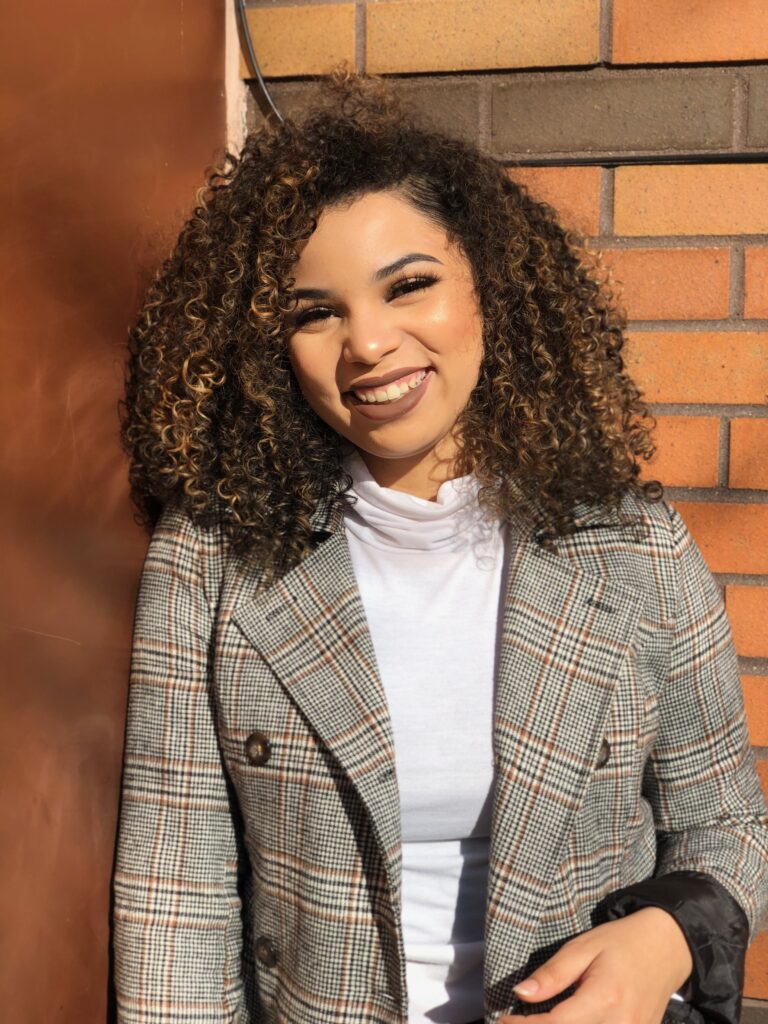
Curator’s Statement
Hi my name is Dayla Whaley, I am completing the BA/MA program at Trinity College (Hartford, CT) in American Studies. In the spring of 2021, I began to take a course called Autistic Blackness. The final project for this course was to create a digital self-contained exhibit. My exhibit is entitled “This is My Part Nobody Else Speak: Unpacking Black Ableism and its impact on the Black Autistic Community.” The title is inspired from a TikTok created by somebody who is black in the artistic community. This exhibit will Focus on sharing perspectives of those in the Black Autistic community who may feel separated, disconnected and outcasted in the Black community. My hope is that through Sharing a piece of their lens, those who come across this exhibit well not only empathize, but change their actions to create a more inclusive and accepting environment.
Throughout the autistic blackness class, I was myself, exposed to perspectives beyond not only my own but those I have encountered in my lifetime. Throughout the class stories were shared in the forms of interviews, art, poetry, and works of writing. My intention is not to speak on behalf of a community I may not be a part of, but rather, to share pieces of their stories that have impacted my own life. The purpose of sharing stories is to humanize a population that is often spectacularized by spectators. I will be highlighting experiences of black ableism; and while black ableism was not directly discussed throughout the course, each discussion ableism was sitting in the shadows of each discussion we had. It has created a tension that lingers around and hovers over the Black Autistic community, preventing them from feeling comfortable being in their essence. Through sharing poetry, TikToks, and Instagram posts, in conversation with the academic resources, I hope to capture just a fraction of the ripple effect black ableism has on the black autistic community.
The reason I selected my approach was because I understood that simply sharing stories outside of context could be dismissed as a single-hand experience. However, these feelings of loneliness are not isolated to a single hand experience, through putting these digital pieces in contacts, I am able to more accurately explain the impact of Black ableism. Some of my sources are providing firsthand experiences, others are providing theoretical and contextual descriptions of ableism. Rather than pulling chunks of text and pasting it into a paper, or even paragraphs on this site, I have decided to make this concept digestible. I have pulled definitions and key concepts from my sources, each idea is woven into the fabric of my analysis.
The Autistic Blackness course played a vital role in my ability to identify the pieces that I am sharing in this exhibit. I selected pieces that resonated with an idea, concept, conversation, or reading we had discussed in class. In addition to that, I selected pieces that were posted by members of the black autistic community, Or were parents who had children in the Black autistic community. This, I believed was the only way I would be able to adequately capture an experience that is not my own. I wanted members of the black artist community to feel seen, heard and represented, yet at the same time wanted the space to educate those not a part of the community in a practical way.
“This Is My Part, Nobody Else Speak.”
Tim Boykin has 75k+ followers on TikTok, he is one of the more popular content creators in the black autistic community on TikTok. During November 2020, there was a trend going around where people would create a TicTok using a snippet of the song ultralight Beam by Kanye West featuring Chance the Rapper. Ultralight Beam is a song with gospel undertones that talks about serenity and peace and a “God dream.” In the middle of Chance the Rapper’s Feature he says “This is my part, nobody else speak.” Tim used his creativity and put together a video that spoke to his experience as a black autistic young man. He shares that he can get overwhelmed and overlooked by others however he is grateful for the support that he does have from his family and friends who give him hope.
Tim’s TikTok inspired the theme behind this entire exhibit. As I came across the video, watched it a few times, I could not help but to think about the people who unlike him do not have the same kind of support from friends and family. I thought about the outcasted members of the black community because they are autistic. This exhibit serves as a place that is truly their part, where no one else can speak. Their stories and experiences with black ableism speak volumes to the atmosphere they live in and prompt a fire and desire for change.
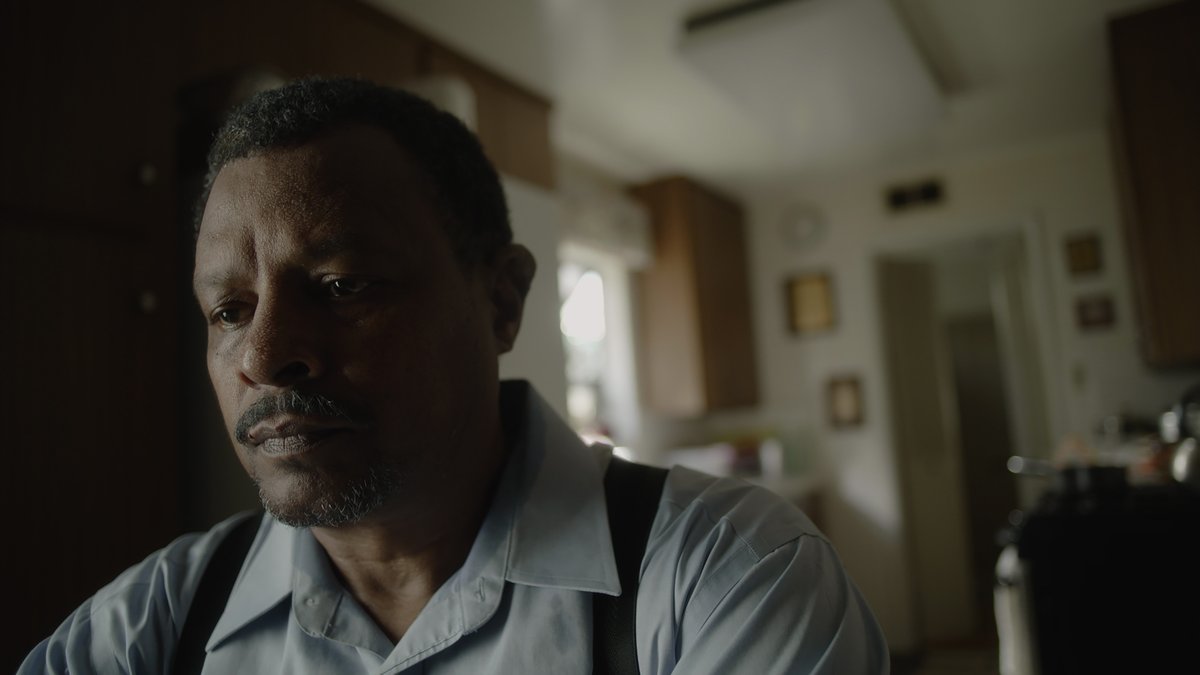
Black Ableism
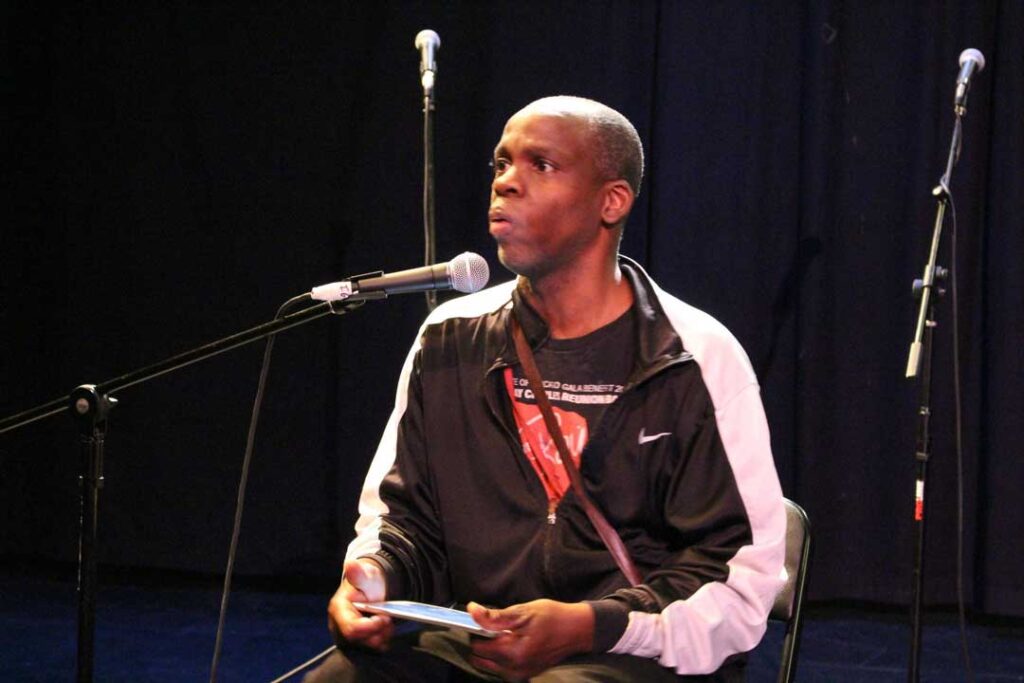
“Black Ableism: Discrimination and social prejudice against Black people with disabilities or who are perceived to have disabilities from Black non-disabled people as far back as slavery.”
— Leroy F. Moore Jr
1.
The impact of Black ableism impact on with the black autistic community
Black ableism was a term first coined by Leroy Moore Jr. Leroy identifies as a black disabled man; he shares his work as an activist, author, journalist and founded Krip-Hop Nation. He has used the term black ableism to describe the discrimination a black disabled person experiences from non-disabled black people. Below are some of the experiences and community voices discussing black ableism.
With over 100k followers on TikTok, Imani Barbarin, @crutches_and_spice has a lot of influence in her community. In February, she decided to address the black community and speak briefly about black ableism. She explains that racism and ableism are closely linked together. Those within the disabled community are not immune to experiencing ablest remarks from people who identify with the same racial, cultural and ethnic background as them.
Her post, extremely tactful, touched a lot of pain points within the black autistic community. As the black artistic community is often spectacularized, she exposes the root of that being desired whiteness. There is a pressure amongst the black autistic community to perform, or act, “larger than life” simply to fit in or to seem more neurotypical. Due to the intersectionality of Black autistic people’s identity, the weight and pressure heightens, especially with no support to express themselves as they are. Unfortunately, this is not something that is Common only amongst lesser-known figures in the black autistic community, in the black disabled community as a whole the stigma remains. This ultimately resulted in even celebrities hiding parts of their identity.
“Stop Your Hands, Stop Your Breath.” – Leyla
For This to happen.
This, being my mixed up turned around brain.
Stop your hands, it makes you obvious
Hide your history, hide it because
we did not survive only to have people like you
be here, not making sense in this time. Not acting like
us. Make eye contact with me and see your shame,
as if I am not called a terrorist by peers for flapping my hands.
As if I am not ashamed for not being stronger.
Stop your hands.
Stop talking, they said.
Nobody cares about your struggle.
Intersectionality is an ideal, not a necessity.
Not a need, but a whisper in the wind.
You don’t need this, stop thinking in your brown brain.
Stop making it about you, stop talking.
Stop your breath, your 6,000 years of culture are showing.
As if that isn’t part of my identity also.
Voices like yours take too much space
Too much air. Stop talking.
Hide your body. Hide your skin.
Stop talking.
Dive deeper into the glass of milk.
You’re welcome here.
Stop talking.
Leyla’s poem is extremely captivating, as a reader, it puts you directly in their headspace. The poem switches from first-person to second-person and tells a story of the experience for this person with Autism. They write “Stop your hands, it makes you obvious.” Expressing that they are told by others to conceal what they do with their hands. Later in the piece they write “intersectionality is an ideal, not a necessity.” Alluding to the fact that they are misunderstood and unable to express their multidimensional self. The poem was introspective although their readers could never experience what she’s been through. They share the thread of thoughts that they hear from opposing voices.
2.
What are some of the needs of members in the black autistic community that are not being met?
Below are some examples of complaints from the black autistic community due to experiences they have had with neurotypicals that had a lack of understanding for their situations.
Nae Naegiash spoke about their personal experiences with black ableism with her family members. They talk about not knowing how to do their hair until her 20s, not being able to speak Spanish because of their disability, and their mom not feeling settled because they cannot operate without support.
Nae’s video showcases the opposite of what Tim mentions in his video. They had a lack of support from family members and had additional pressure from society to uphold a standard. They are an example of a social consequence with black ableism. Their loneliness, feelings of isolation and exclusion are as a result of black ableism. Unpacking Nae’s complaints we can understand needs the black autistic communities have yet are unfulfilled. They desire acceptance, empathy, and to be seen and heard.
Don’t Let them Be Autistic – Morénike Giwa Onaiwu
There’s a pattern that has existed in my life for as long as I can remember. Not only do I do it, many other people that I know do it as well. I learn about some type of problem–a robbery, a shooting, a murder. About some type of horrific event…one of the many ways humans mistreat and harm one another. And of course, I am saddened for the victims, often offering up a silent prayer for them. But the very next instant, I do something else. I close my eyes for a moment, and then I brace myself as I await more information. And all the while one thought/prayer/chant/fear is running through my head:
“Don’t-let-them-be-black-don’t-let-them-be-black-don’t-let-them-be-black-don’t-let-them-be-black-PLEASE GOD don’t-let-them-be-black…”
Why? Because I am black. And I know that if the perpetrator IS black, like me, then there’s yet another immense form of baggage that it will carry for me, for my children, for people who look like me, and for people who care about those who look like me. And no matter how many of us are honest, law-abiding, kind, non-violent people, we are erased every time the person who has done something wrong has skin that looks like mine.
In the last few years, I’ve added a new thought to the one above. Because a few years ago, I learned that my beautiful, smart, strong, loving youngest son and daughter were autistic. The “failed” M-CHAT, echolalia, ecstatic flapping, hyperlexia, lack of eye contact, different way of socializing, joyful spinning, toe-walking, late speech and later pedantic speech, lining up every object on the planet, fascination with ceiling fans, lights, and spinning items, great attention to detail, sensory sensitivity etc, etc, etc. My babies were unequivocally, undeniably, unashamedly smack-dab on the autism spectrum. Once we learned more about autism, it was almost laughable that we hadn’t known about them. And as we learned even more, it became almost laughable that we hadn’t known about me…as in time I suspected, and later confirmed, that I was autistic as well.
Autism is many things. But it is seldom what it is perceived by people to be. It isn’t a tragedy. It isn’t a ravaged life. It isn’t an entity that destroys lives. It isn’t a disease.
And it sure as heck isn’t a crime.
The media seems to enjoy speculating that nearly every time there is a school shooter (it’s sad that we even have multiple school shooters to compare, but we do) or a perpetrator of a violent act is presumed to be on the autism spectrum. It happens all the time.
Autistics commit crimes, yes. Just like non-autistics commit crimes. But statistics show that autistics are more.
A Mother’s Experience
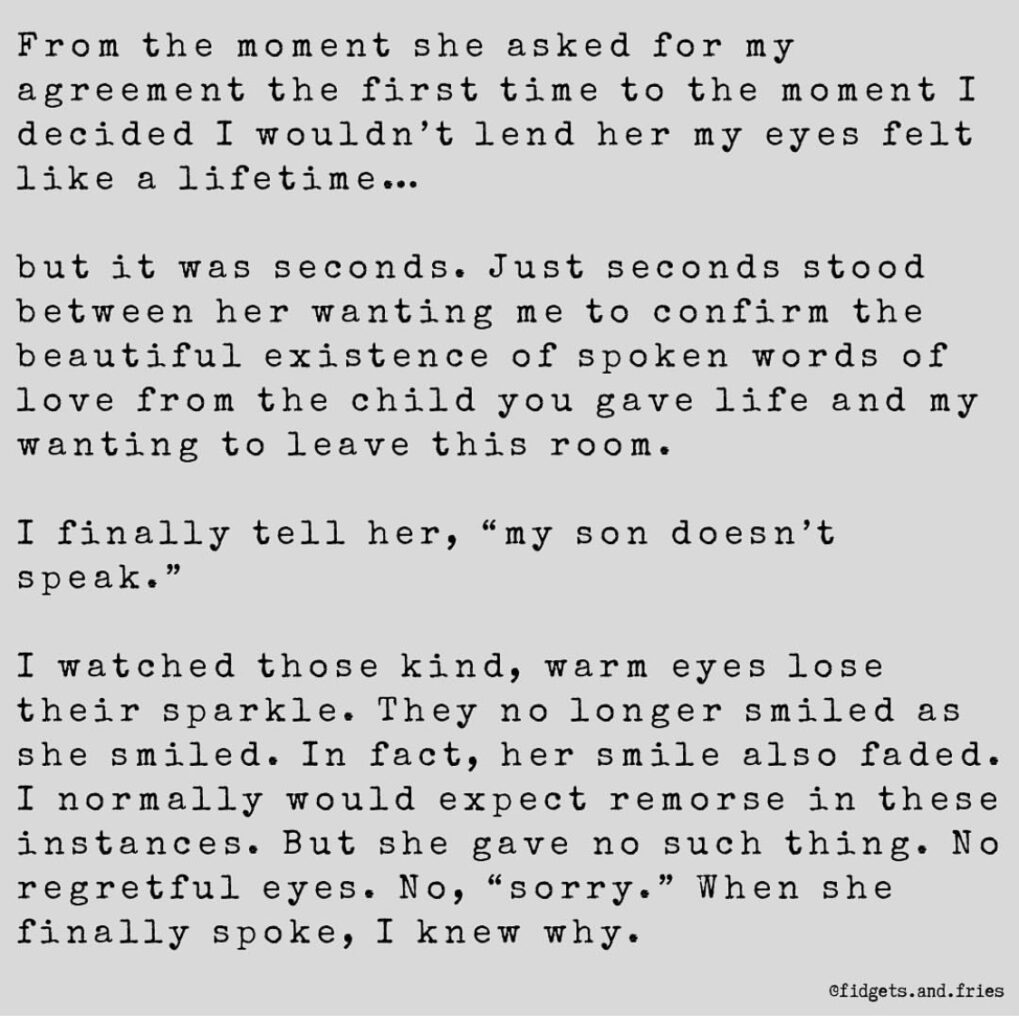
Tiffany Hammond
Tiffany is a mother of two black children with autism. She utilizes her platform on instagram to share her stories and thoughts with her audience. Through a 10 slide post she outlines the story of a trip to a disability center. She sees another mother greeted by her son who says that he loves her. She talks about the emotions that flood her mind as she looks at a shared “aww” moment. As she’s looking she talks about feelings of anger and sadness, not directed at the mother, but feelings that are within her. The observing mother’s son doesn’t speak, and as she desperately wanted to leave the room, her eyes met with the other mother. “My son doesn’t speak,” she says. “One day;” the other mother responds.
This post captured a moment where a seemingly so innocent encounter actually carries weight, has gravity and as the caption states, is quite “triggering.” This is an example of how some of these seemingly innocent encounters could actually be damaging or create a rift between community members. The post doesn’t offer a solution or an alternative, but rather speaks about how the mother refuses to hang her son’s worth on whether he will speak or not. Her son’s worth should not be dependent on his proximity to being neurotypical or whiteness, but should rest in his humanity. We must accept him and value him for who he is.
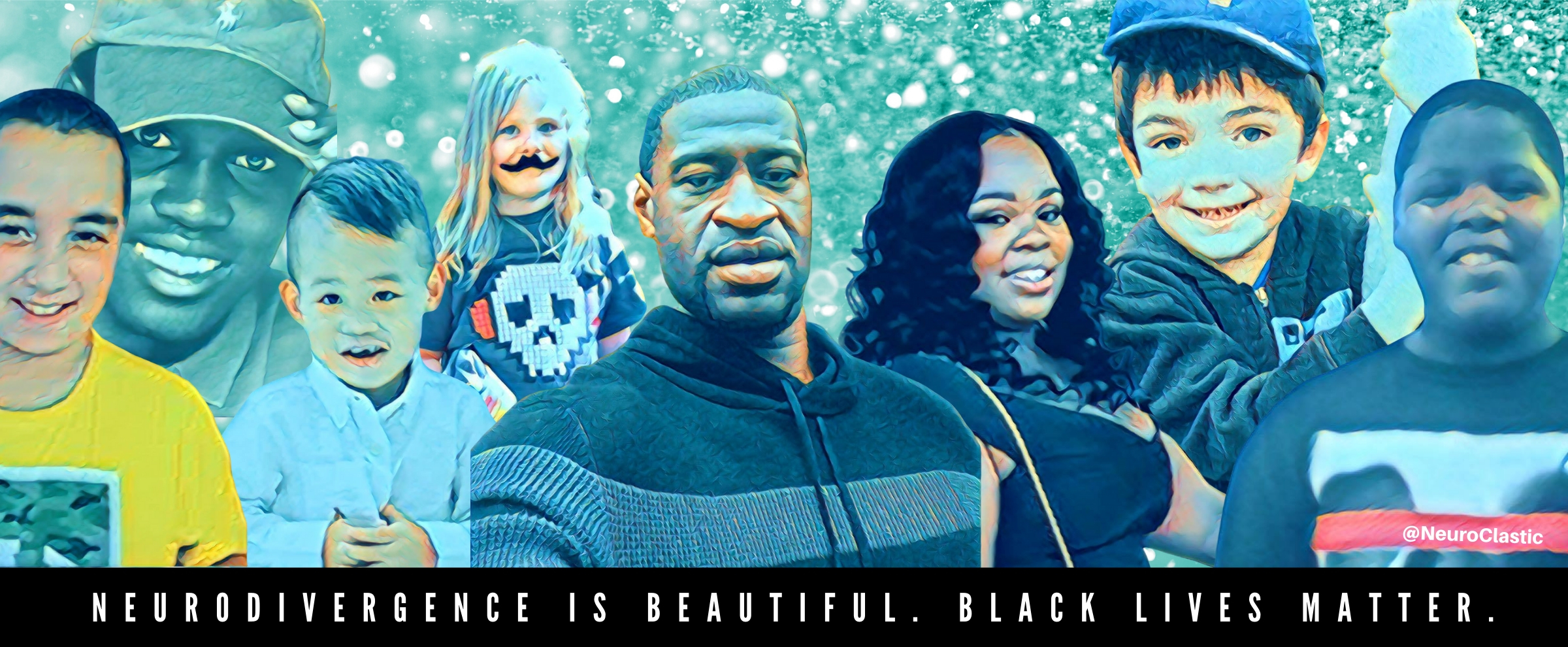
Acceptance > Awareness
3.
How might we create inclusive spaces and move from awareness to acceptance?
Solutions as noted from “Ableism the Causes and Consequence of Disability Prejudice.”
1.) Meaningful Contact
“Meaningful contact enhances our knowledge base of intergroup similarities and differences – both of which are important to appreciate.”
2.) Multicultural Approaches to Diversity
“The ability to listen to others’ perspectives, to cultivate empathetic concern for another’s well‐being, is far more effective at reducing prejudice and increasing prosocial behaviors when egocentric concerns are not competing.”
3.) Anti-Prejudice intervention
“The most effective interventions are those that incorporate multiple strategies and mechanisms for change.”
One of the biggest social consequences with black ableism is that members of the black autistic community lack connection to a part of black community. Ignorance and passivity will not be an effective solution in assisting with creating an inclusive space for them. Michelle Nairo-Redmond, author of Ableism the Causes and Consequence of Disability Prejudice, explains that there must be meaningful contact to notice self‐similarities and realize that not everyone in the black autistic community is the same.

